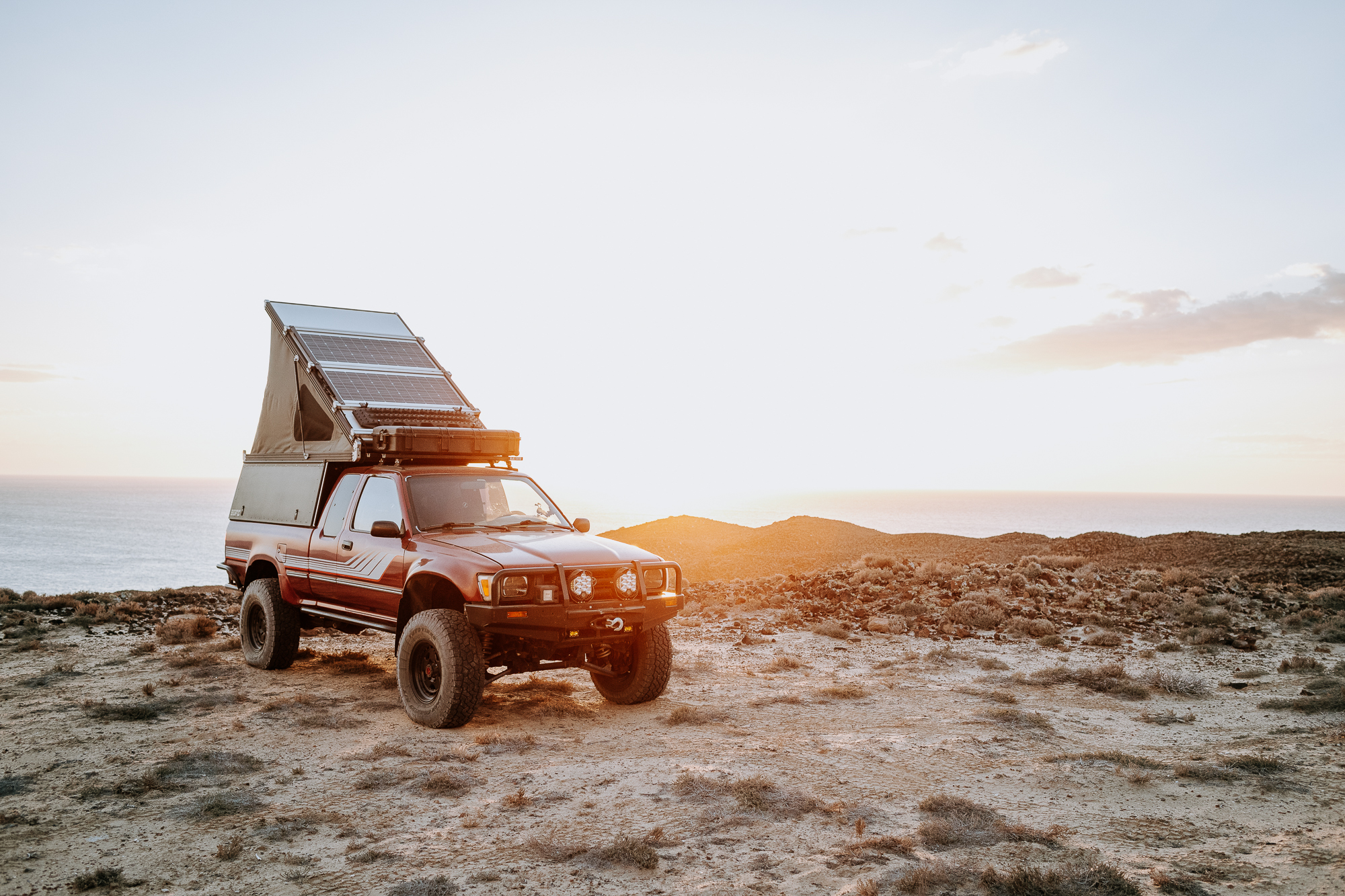Editor’s Note: This article was originally published in Overland Journal’s Gear 2023 Issue.
Long-term overland travel requires self-sustained living, and part of that living demands electricity. At the very least, most travelers are using those charged particles to power 12-volt fridges and LED camp lights. More often than not, overlanders are now including induction cooktops, freezers, heaters, and large DC-to-AC inverters in their vehicle builds. As considerable electrical loads become the norm, the inclusion of absorbed glass mat (AGM) and lithium batteries are paramount. To charge those batteries, you can utilize the vehicle’s alternator, but if you want to keep the battery banks topped up when sitting still in a remote location, solar is by far your best option.
In 1954, Bell Labs showcased solar panels for the first time. They used their panel to power a small toy Ferris wheel and radio transmitter. Since then, solar panels have been used around the world in both static (off-grid cabins) and dynamic use cases (recreational vehicles). Regardless of their end use, solar panels use photovoltaic modules to convert light energy from the sun (photons) to electricity. Although the specifications—namely the nominal watts rating, open circuit voltage, and closed circuit amperage—provided by manufacturers are found under standard laboratory conditions and not necessarily indicative of real-world output, they do help to differentiate the potential energy provided by various panels.
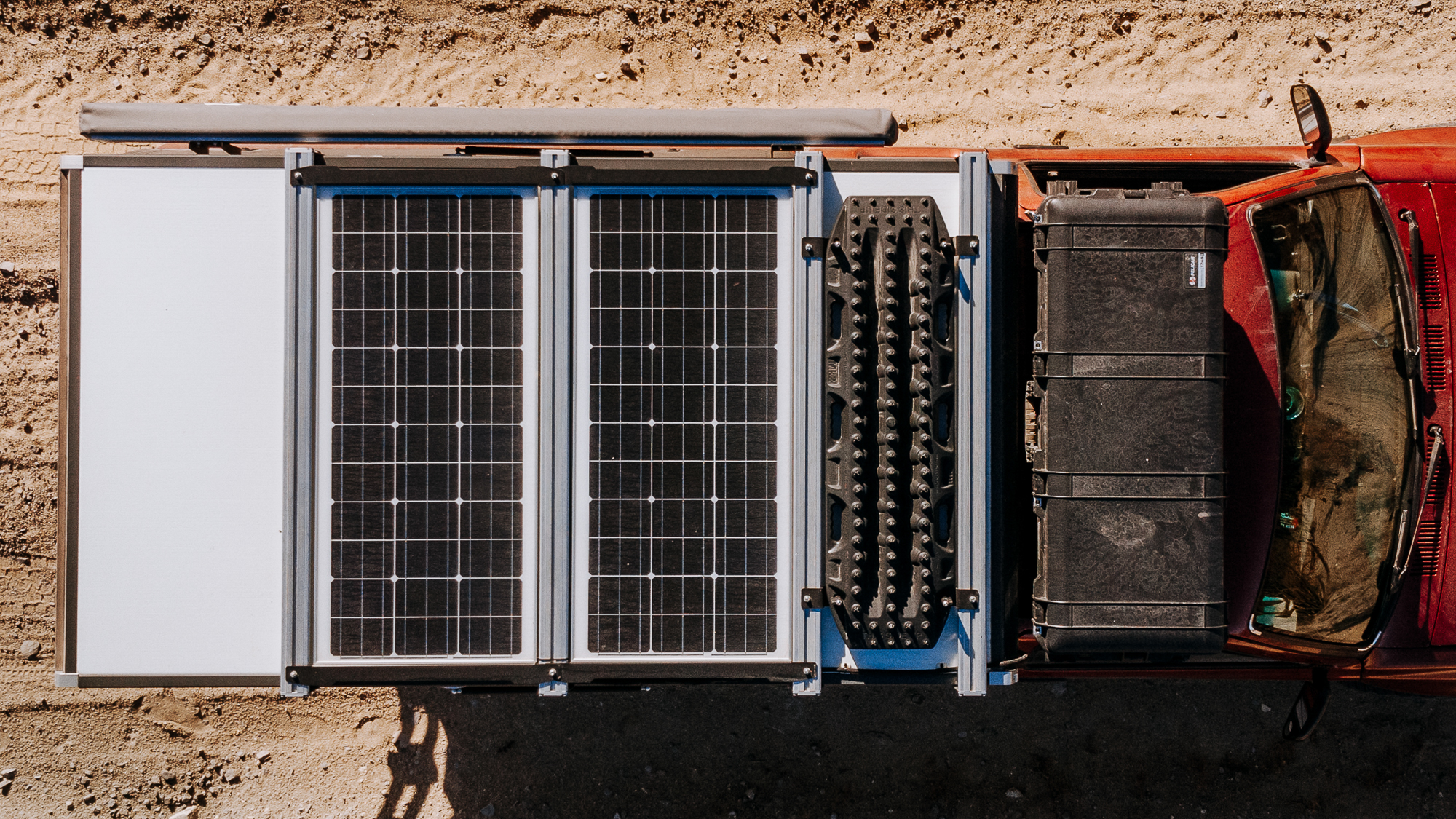
Although similar, many of the panels in this review are manufactured with different techniques with varying materials. These slight differences can make a big difference in the real world. If you look at all the panels rated at 100 watts, you’ll soon see that several are rigid, some flexible, and a few are portable. Even among the rigid panels, you’ll see varying weights and efficiencies (usually most evident in cloudy, low sun angle, or shaded conditions). Additionally, each panel may have different mounting requirements. One of the most important factors when selecting a panel is likely the price, but long-term performance and durability are critical considerations when calculating value. Overall, these comparisons should help when deciding which panel is best suited for your vehicle and when calculating how many solar panels are required for your electrical system.
Testing
This review is aimed less at testing the panels apples-to-apples to confirm maximum power output and more at showing what each panel (and type) does in varying lighting conditions. We measured the short circuit amperage of each panel throughout the day (for a total of 13 hours) until shade from the adjacent building covered them. I chose a clear and sunny day, but there was intermittent cloud cover. These short instances allowed me to see how much each panel’s output decreased when not in direct sunlight. For this review, we selected a handful of unregulated rigid, flexible, and portable panels.
Solar panel output is directly related to the solar altitude angle and the solar azimuth angle. We could dive into the calculations, but for the sake of this article, you can assume the following: The higher the sun is above the horizon and the more perpendicular the solar panel is to the sun, the higher the output. Ambient temperature (and, therefore, the temperature of the solar panel) also affects output; typically, sunny and cool days provide the best results.
How does all of this affect the average overlander? Most vehicles we see traveling North America (and the world) have solar panels mounted to the roof of their camper, tent, hood, or trailer. This position, facing straight up, isn’t the most efficient but is by far the easiest to manage. You install the product and forget it. For this basic test, we will do the exact same thing. The panels will be flat, with their outputs measured throughout the day. This will show how well each of the products in question works midday with the panels almost perpendicular to the sun versus morning and afternoon low solar altitude angles. We’ll also look at how each performs in shaded or cloudy conditions.

Clockwise from left: Zamp Solar, Samlex America, Redarc Electronics
I also checked to see how each item was affected by shade. Solar panels are constructed with bypass diodes between cells, or more commonly, a string of cells. The role of these diodes is to eliminate hot spots on the panel when it is partially shaded. If there are a large number of cells per bypass diode, there is a good chance that a small amount of shade on a solar panel will eliminate all power output. Conversely, if there are bypass diodes on every cell, the cells that remain in the sun will still produce power. To test this, I simply shaded the bottom half of each panel and confirmed whether or not there was any power output.
Solar panels are generally categorized in watts, but the number we’ll focus on is the short circuit current (ISC). The ISC (measured in amperes), when under perfect conditions, is the highest current that the solar panel can produce. Normally, this number is used to calculate the capacity of the charge controller required for the electrical system, but in this case, we’ll use the ISC to get a general idea of performance. ISC requires a literal short circuit, a connection of the solar panels’ positive and negative leads. To measure current, we used an Extech Instruments EX623 AC/DC clamp meter. Since there is no resistance in this short circuit, these values will be higher than you would see in a typical electrical system.
I selected a range of rigid, flexible, and portable panels closest to the 100-watt rating. When talking about output or performance, I’ll make apple-to-apple comparisons per rated watt. Along with the output per rated watt, the output per rated watt per pound will be considered. Payload capacity is an essential consideration in any overland vehicle build; solar panels are no different. The test was conducted in Calgary, Alberta, in July 2022.
Rigid Solar Panels
Rigid solar panels have become the benchmark in the solar panel industry. Their robust construction provides peace of mind that when installed on the roof of your truck or camper, it will withstand intense heat from the sun, extreme cold on clear winter days, 80 mph winds on the highway, scrapes by low-hanging branches, hail storms, and vibration from hundreds of miles of washboard roads. The tempered glass, corrosion-resistant aluminum, and sturdy installation brackets used by most manufacturers mean that you can usually set it and forget it. Once the panels are installed, they can provide worry-free service for years to come with zero maintenance—other than the occasional cleaning. Usually, they’re less expensive than flexible or portable models.
In the past, rigid panels usually provided higher efficiencies than flexible ones, especially when comparing them to glued or taped-on flexible panels, which have a substantial increase in temperature throughout the day.
Unfortunately, all of these positive attributes do come at a price. Rigid panels have larger dimensions (especially the thickness) and are heavier than their flexible counterparts. Mounting rigid panels can also be more difficult since they require a roof rack or mounting of the panels directly to the roof, requiring drilling and bolting.
Redarc Electronics 120-Watt Monocrystalline Solar Panel (SMSP1120)
 Born in the Australian Outback, Redarc has been designing and building automotive electronics for over 40 years. Their range of products includes in-vehicle battery chargers, inverters, electronic brake controllers, vehicle electronic management systems, and an assortment of solar panels. With 15 percent of every sale going back into research and development, Redarc promises to continuously evolve.
Born in the Australian Outback, Redarc has been designing and building automotive electronics for over 40 years. Their range of products includes in-vehicle battery chargers, inverters, electronic brake controllers, vehicle electronic management systems, and an assortment of solar panels. With 15 percent of every sale going back into research and development, Redarc promises to continuously evolve.
This panel looks and feels like many others I have used in the past, but that’s not necessarily a bad thing. Compared to many panels in this test, the Redarc is heavy, and the profile is fairly thick, but the confidence provided by the traditional construction methods is well worth noting. The robust aluminum-framed and tempered-glass-coated 120-watt monocrystalline flat panel will surely withstand severe road and weather conditions as intended. With standard MC4 connectors, these panels can be connected to most standard camper solar wiring.
This was the least expensive rigid panel in the test. Combined with mid-range performance in testing, it shines in the value department. It’s hard to find fault with the Redarc as it works as intended at a reasonable price point, with a company that has decades of experience backing it. If you have the payload capacity available, I expect you could mount these on the roof of your vehicle and forget about them for years to come.
Pros
- Classic construction with sturdy aluminum frame
- Least expensive of the rigid panels tested
Cons
- Heavy
$385 | redarcelectronics.com
Samlex America 100-Watt Monocrystalline Solar Panel (SSP-100) (VALUE AWARD)
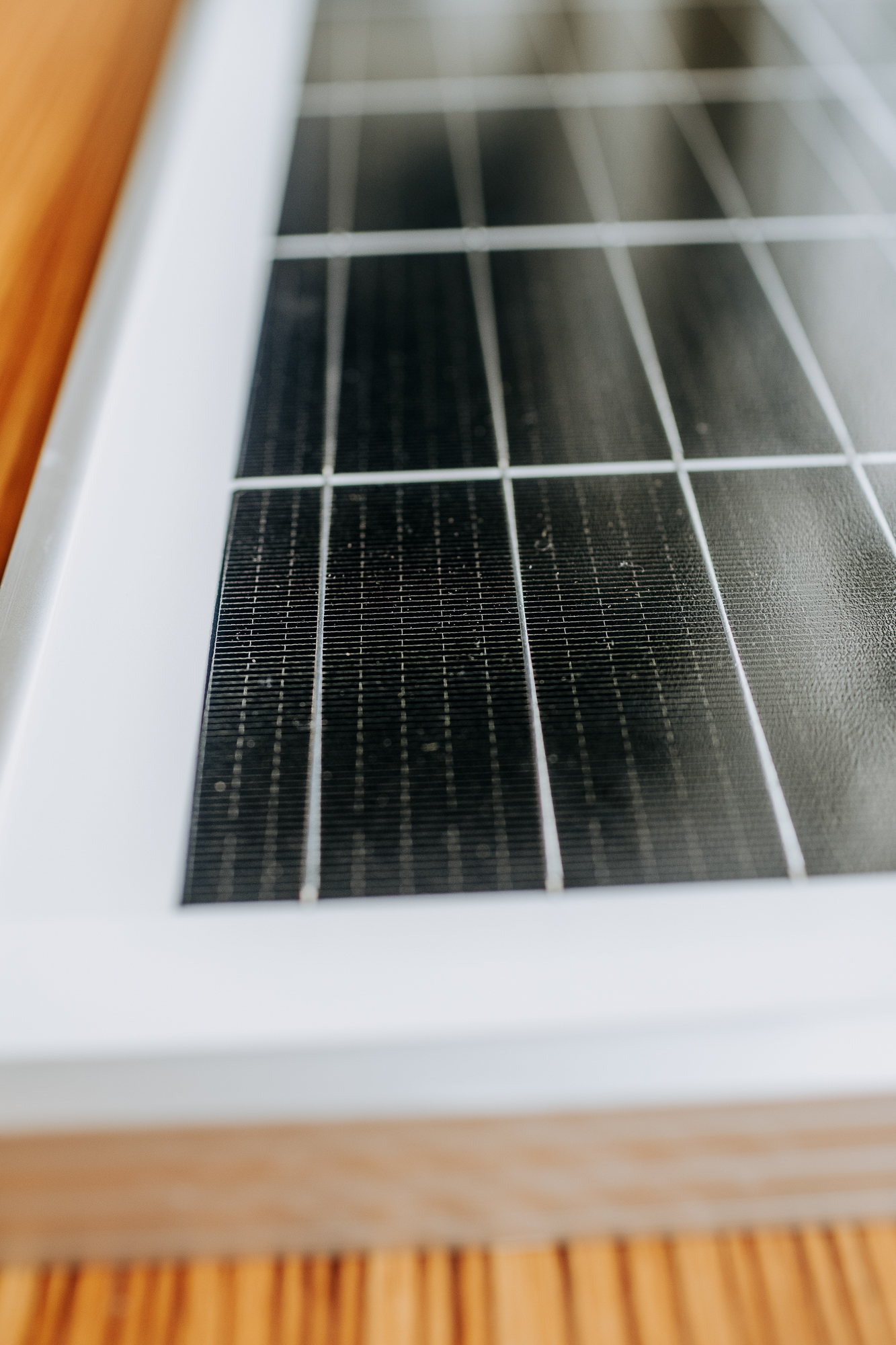
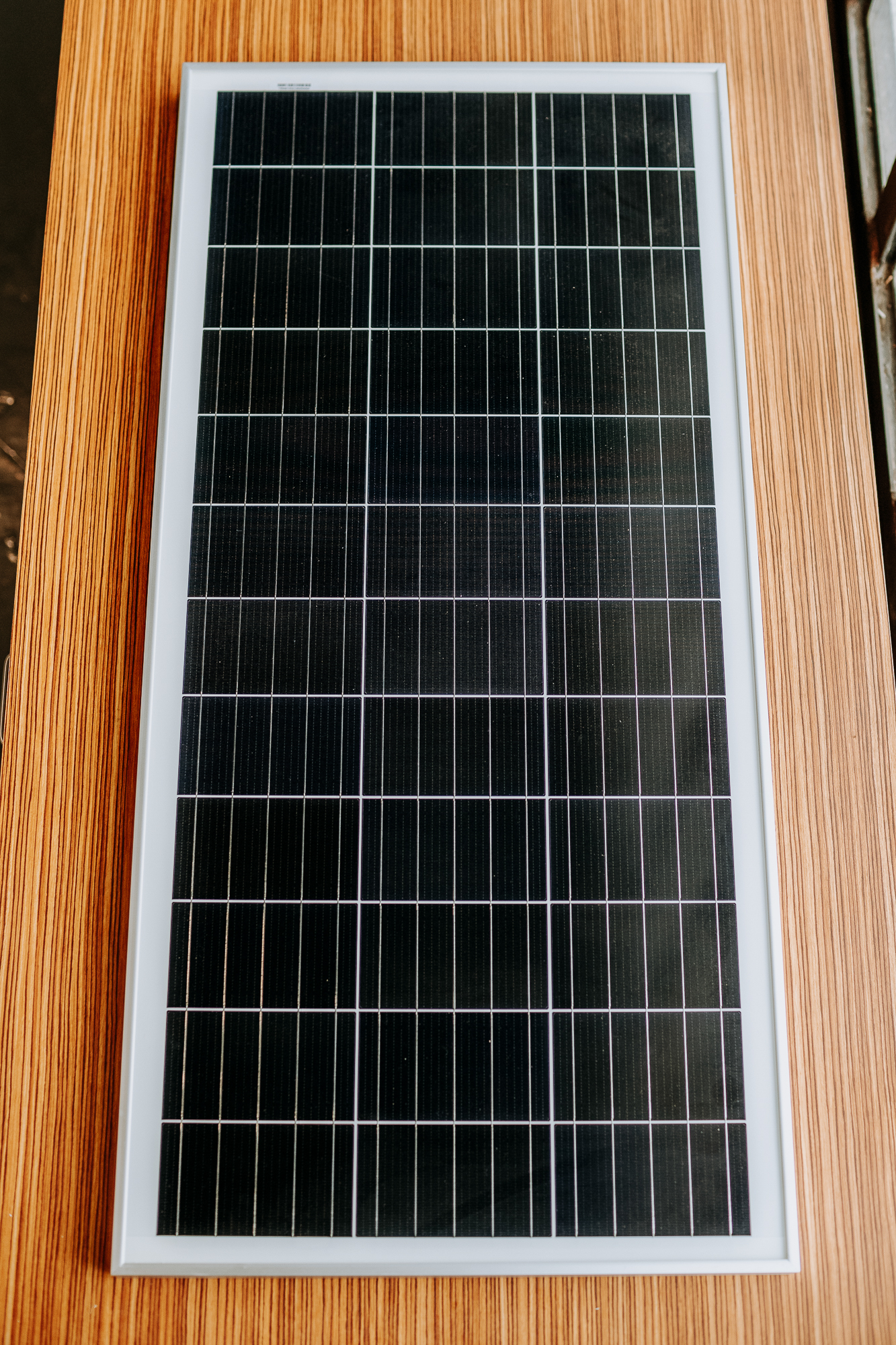
In 1991, Earl Berg founded Samlex America with the goal of providing the ability to power household appliances anywhere in the world, even off the normal electrical grid. Samlex now sells products to over 90 countries. Originally, these products were aimed solely at the commercial and industrial market, but in 2009, they launched a recreational power program focusing on the needs of the marine, RV, and off-road markets.
Samlex has focused on creating a robust product that is resistant to the harsh elements solar panels are exposed to on a daily basis. The monocrystalline cells are protected by tempered glass and mounted via an anodized aluminum frame. This one utilizes standard MC4 connectors. The Samlex solar panel is slightly more expensive and heavier than the Redarc monocrystalline counterpart, but it performed at a higher level both in amps-per-rated watt and amps per pound.
Unlike many panels in this test, I can speak to their long-term use as I have had various Samlex solar panels on the roof of my 1990 Toyota Pickup since 2013 (including a pair of these 100-watt panels currently installed). After countless kilometers of washboard roads and plenty of interactions with low-hanging tree branches, I haven’t encountered a single issue to date.
Pros
- Good value
- Reliable (based on years of personal use)
Cons
- Heaviest rigid panel tested
$256 | samlexamerica.com
Zamp Solar 100-Watt Obsidian Series Solar Panel (ZSK1006)
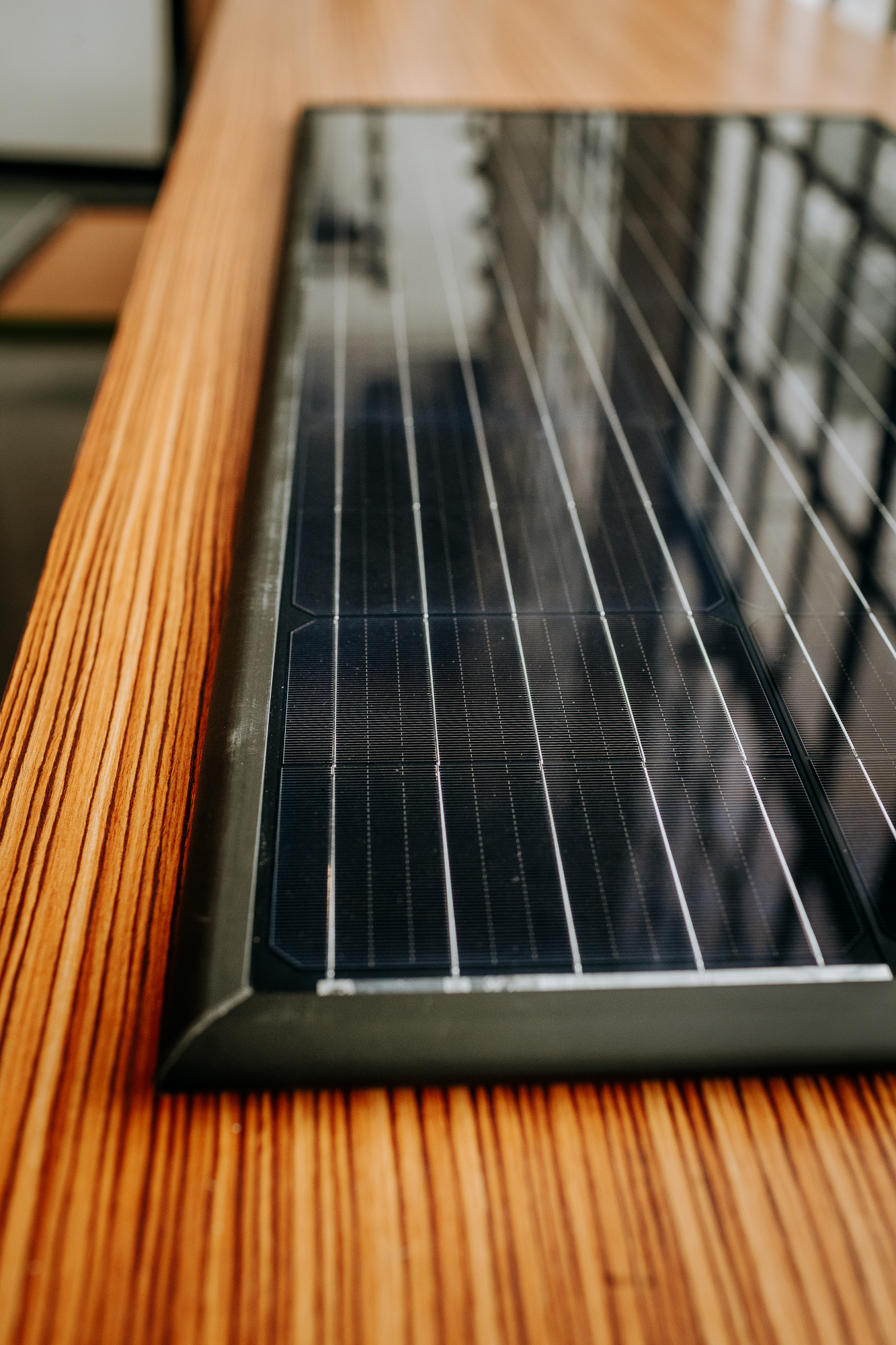
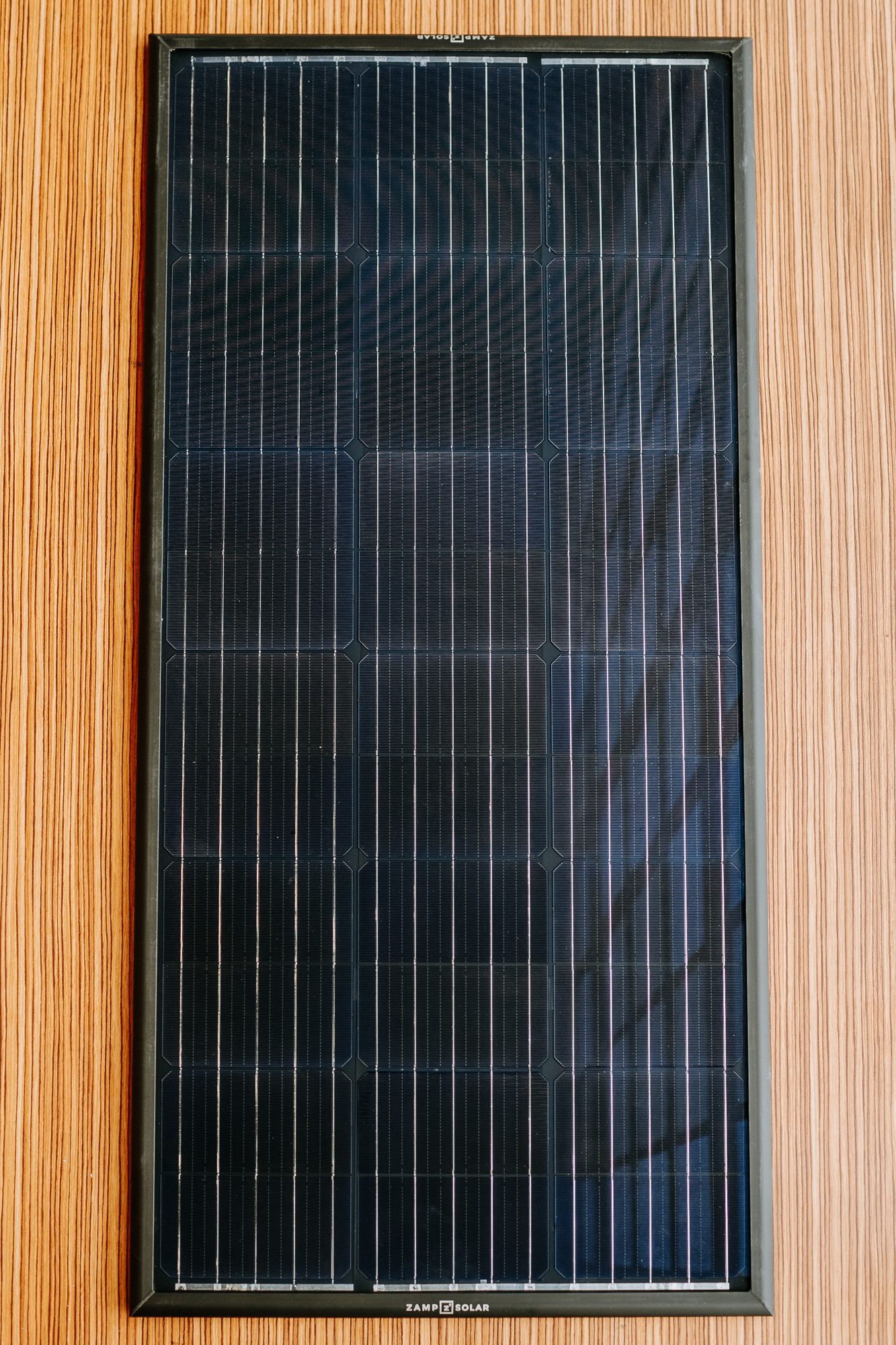
Oregon-based Zamp Solar has a goal of enabling customers to thrive outdoors. Initially, Zamp imported solar panels from overseas, but in 2015, they moved design and manufacturing to Bend to improve the product and provide local employment.
The Zamp Solar Obsidian Series solar panels are significantly thinner and lighter than traditional rigid panels. With an advertised efficiency rating that rivals standard panels, it appears to have most of the benefits without the compromises. The low-profile design is more aerodynamic than other panels, but more importantly, the thinner construction could make your vehicle just short enough to fit in a shipping container or under short gates. The Obsidian is at least 20 percent lighter than the other rigid panels in this test based on pounds-per-rated watts. The Zamp 100-watt panel performed right in the middle of the pack in both amps-per-rated watt and amps-per-pound comparisons.
Zamp stands behind its products with a 25-year limited peak power output warranty. If the power output drops below 90 percent of minimum peak power at standard test conditions in the first 10 years or 80 percent within 25 years, they’ll repair or replace your panel. Unlike all other models in this test, Zamp utilizes water-resistant ATP connectors. The company does have miscellaneous adapters to suit whichever connector you need.
Pros
- At least 20 percent lighter than the other rigid panels in the test
- Half the thickness of most rigid panels
Cons
- Most expensive rigid panel in test
- ATP cable connections will likely require adapters to connect to existing wiring
$500 | zampsolar.com
Flexible Solar Panels

Clockwise from left: Overland Solar, Sunflare
Over the last few years, flexible solar panels have become more and more prevalent in the overlanding community. The ease of installation, thin profile, and lightweight design make them a fantastic option for most off-grid campers. Although they are not as resilient as rigid options, flexible panels can still withstand some abuse.
Flexible panels easily mold to curved surfaces (such as an Airstream trailer or SUV roof) and mount with double-sided, high-bond tape or adhesive. It is important to note that most flexible panels need an air gap between the panel and mounting surface. This helps to dissipate heat and extend its life. A panel that is adhered directly to the mounting surface can overheat, causing damage to the panel or the surface it is attached to. Keep in mind that some composite panels used in camper construction today cannot withstand high heat from installed solar panels that do not have the airspace to dissipate heat, potentially causing delamination. Always check with the camper manufacturer to confirm best installation practices.
Overland Solar Overlander 130-Watt ETFE Semi-Flexible Panel (OSORV130)


Since 2007, Overland Solar has been providing portable solar panel systems to overlanders, adventurers, and military units around the world. Built in Boise, Idaho, using mostly US-sourced materials, they are designed from the get-go with the end user in mind.
The Overlander 130-watt panel uses a tough ethylene tetrafluoroethylene (ETFE) coating that withstands high temperatures; has an essentially self-cleaning, non-adhesive, stain-resistant surface; and is completely permeable by ultraviolet (UV) rays. Overland Solar boasts that this panel is designed for maximum output throughout the day and generates power as soon as there is visible light. Although it didn’t perform as well as expected when comparing amps-per-rated watts, this panel was at the top of the pack when weight was included in the calculation.
The thick ETFE-coated panel appears to be significantly more robust than its flexible cousins while being much lighter than any rigid panel on the market. Combined with its very low weight, shallow profile, six tie-down grommets, semi-flexible construction, and great price, it could likely take the place of most rigid and flexible models alike.
Pros
- Lightweight, thin profile
- Should withstand more abuse than a standard flexible panel
Cons
- May require a full roof rack for easiest installation and most efficient output
$377 | overlandsolar.com
Sunflare Xplor 126-Watt Flexible Solar Panel
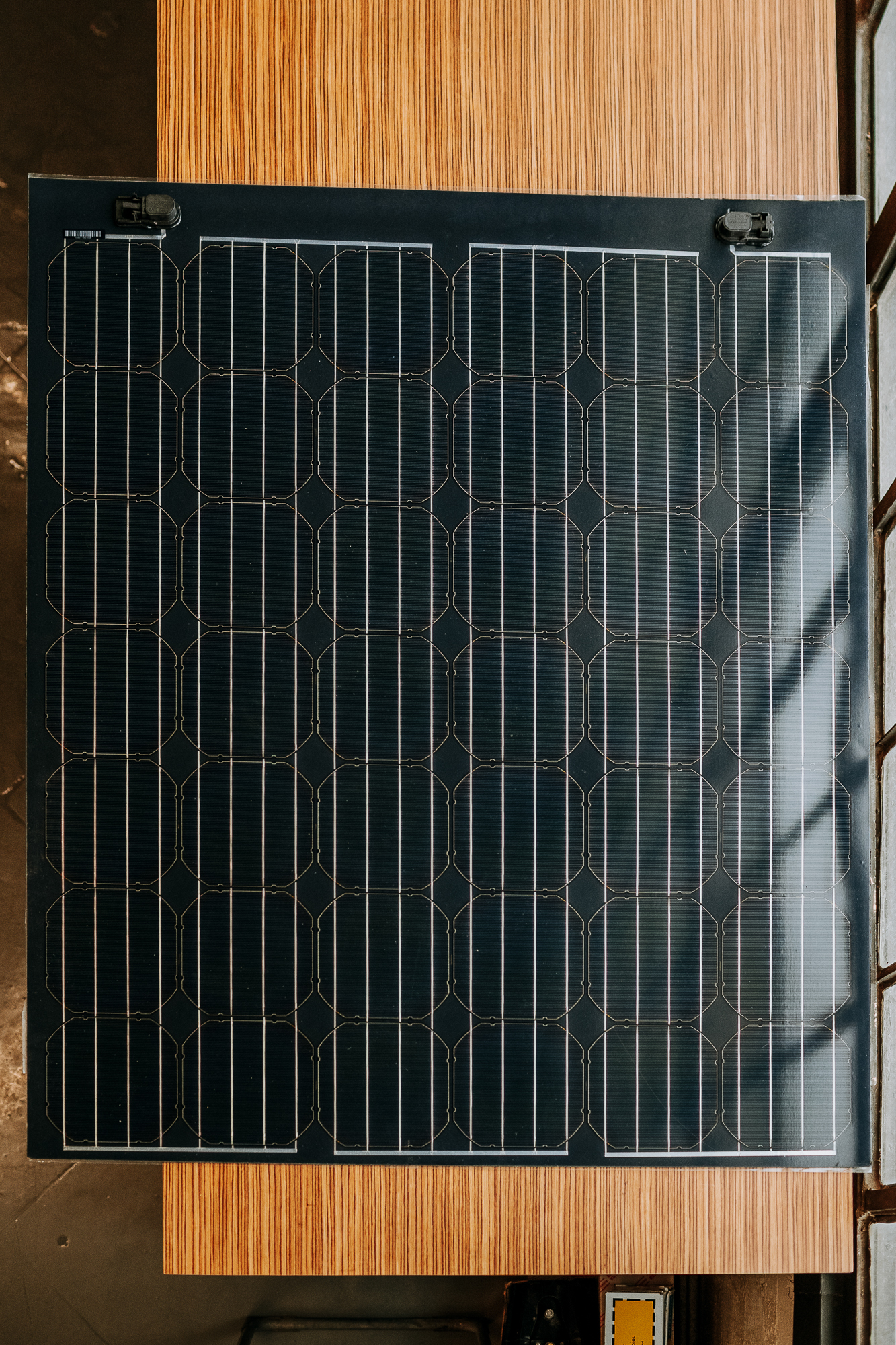
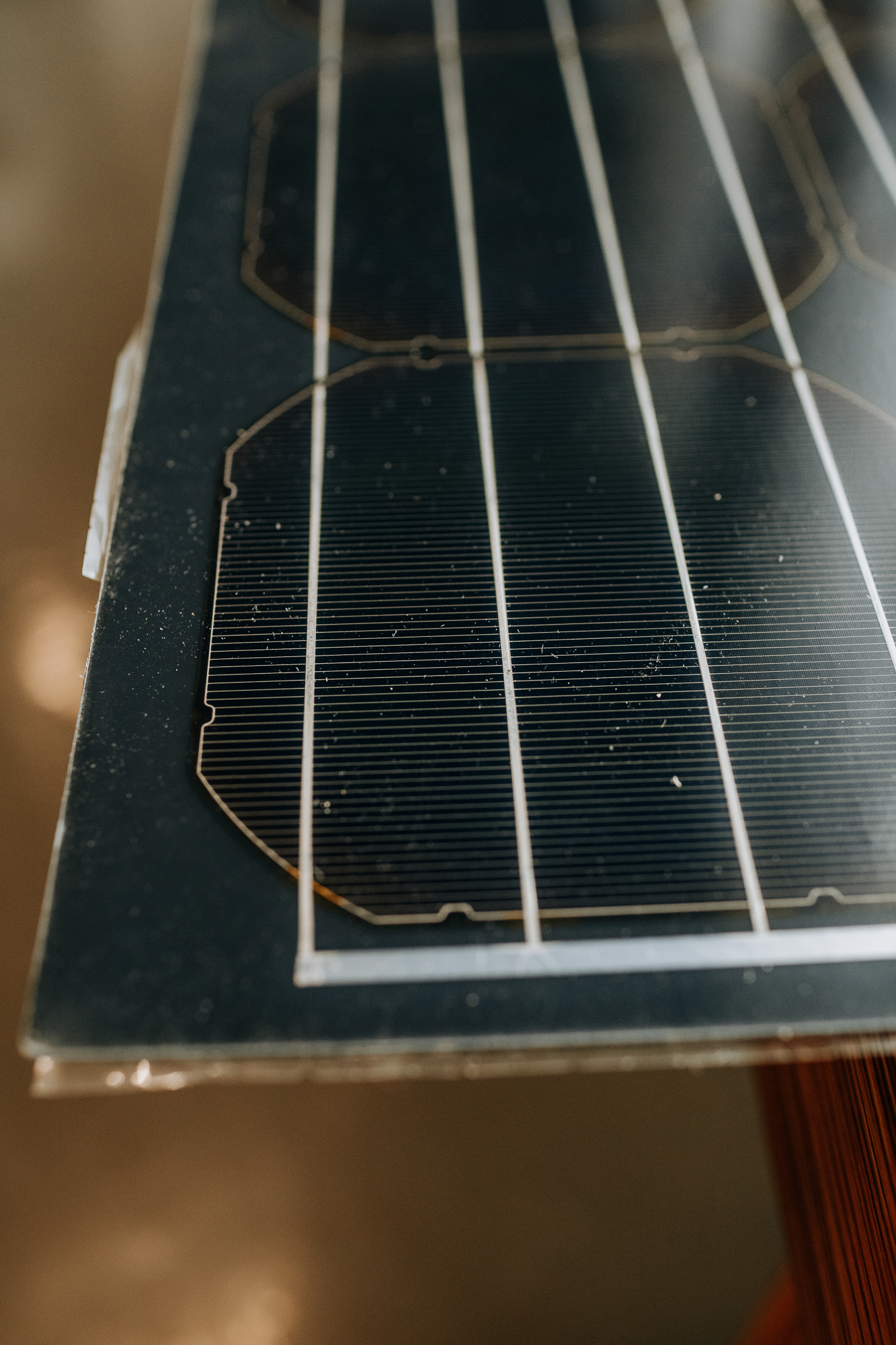
Sunflare was one of the first companies to mass-produce flexible solar panels. Their offerings can be found on off-grid cabins, homes, commercial roofs, boats, and recreational vehicles. Philip Gao, CEO of Sunflare, hopes that their mass-produced copper indium gallium selenide thin film (CIGS) will be found on every surface under the sun, decreasing carbon dioxide (CO2) emissions while providing inexpensive power worldwide.
Their CIGS cell-by-cell manufacturing process eliminates brittle silicon solar cells. Combined with 3M plastics, this creates a lightweight, flexible panel that should be quite durable. A 25-year warranty shows they stand behind their craftsmanship. Additionally, each cell has bypass diodes. That means that when the panel is shaded, it will still be able to produce power from the cells that are unshaded. As expected, the Xplor performed very well for its weight.
When half-shaded during the test, the Xplor produced about half of the power, proving that the bypass diodes on each cell were doing their job as intended. The panel arrived with double-sided high-bond tape pre-installed. When positioned on the appropriate surface, installation should be straightforward.
Pros
- One of only two panels that continued to perform when half-shaded
- Installation with supplied double-sided tape is very simple
Cons
- Installation may not be possible on composite campers
- Almost double the footprint of comparable panels
$550 | sunflaresolar.com
Portable Solar Panels

Clockwise from left: Zamp, Overland Solar, Redarc
Folding-blanket or suitcase portable models are an excellent option for people who do not want to permanently mount a rigid or flexible panel to their roof. Portable panels also work well for overlanders looking to add additional solar capacity to their current, permanently mounted solar system. A portable panel usually comes with a lengthy cable for positioning directly in and toward the sun. This allows your vehicle to be parked in the cool shade while still harnessing the power of the sun (so you can continue to run your fridge and charge your iPhone).
The biggest downside of the portable solar panel is that it takes up space in the vehicle, and you have to put in work to deploy it. If you have the space and payload capacity, it may be the perfect option.
Overland Solar Bugout 130 Solar Charger (Editor’s Choice)
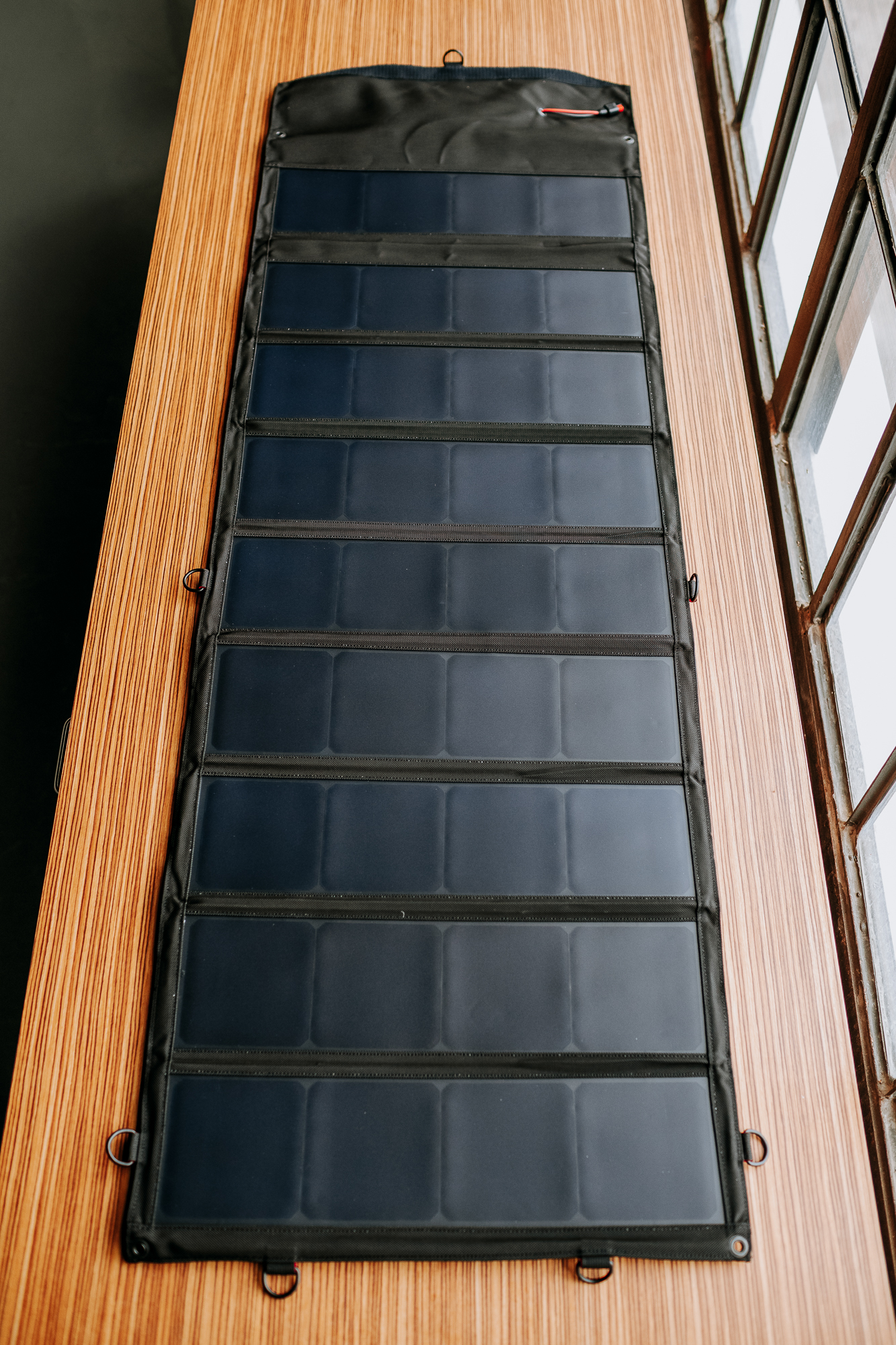

Produced in Boise, Idaho, the Overland Solar Bugout 130 has an excellent closed-form factor that could find a home in most vehicles. The double-stitched 1050 denier Cordura and metal D-ring and grommet tie-down points provide a rugged panel capable of withstanding abuse in and out of the vehicle, with the ability to tie it down outside to avoid it taking flight in windy conditions.
The Bugout 130 tested is an unregulated solar panel that can plug directly into a lithium battery pack (such as a Dometic PLB40) or regulated battery management system (think Redarc Manager 30). Alternatively, their charge controller bundle allows the panel to be connected directly to your house or starting battery. The Bugout 130 uses a mini Anderson connection, but Overland Solar has many options to adapt this to whatever connection type you require.
I appreciated the design of the panel with its durable and easy-to-use case. Although the Bugout 130 seemed to have a low amperage per rated watt, it did very well for its weight. I feel the useability and confidence that it can take some abuse outweighs any lack in performance, and that this a portable panel I could see myself taking the time to set up on a regular basis.
Pros
- Well-designed carry case
- Lightweight and least expensive portable panel in the test
Cons
- Slightly fewer amps per rated watts than any other panel in the test
$595 | overlandsolar.com
Zamp Solar 100-Watt Obsidian Series Portable Kit (Editor’s Choice)

Zamp has taken their lightweight 100-watt Obsidian Series solar panel and created a portable kit for those who don’t want a panel permanently installed on their vehicle. The integrated carrying case serves as an adjustable stand, capable of providing the perfect angle toward the sun at all times. A zippered nylon pocket is large enough to store all necessary charge controllers, cables, and other accessories.
The Obsidian panel itself had good output, but the weight of the panel combined with its rugged carry case meant that this performed the worst when looking at output versus weight. Unfortunately, since the portable kit is based on a rigid panel, it also doesn’t fold down to a small size.
It is unlikely you’d choose the Obsidian if you travel out of a small vehicle with limited space, but if you have a Sprinter van, RV, or even a small off-grid tiny home, a couple of these panels would allow you to manually connect them and follow the arc of the sun throughout the day and provide the option to be stowed at night or when on the move.
Pros
- Self-supporting case allows setup at multiple angles
- Robust case includes a zippered pouch to store optional charge controller and cables
Cons
- Does not pack up small
- Heaviest panel of the test
$600 | zampsolar.com
Redarc Electronics 160-Watt Solar Blanket
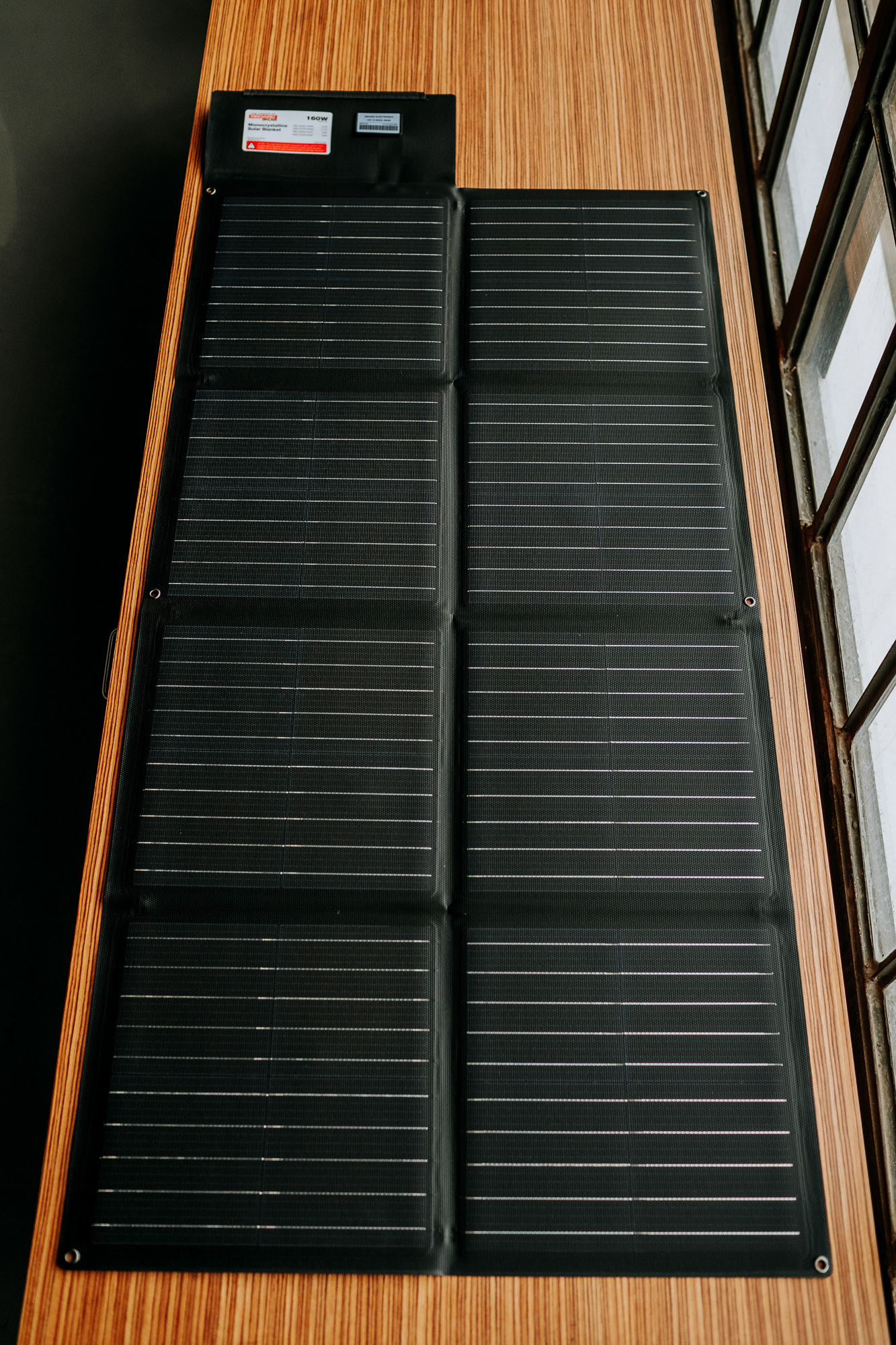
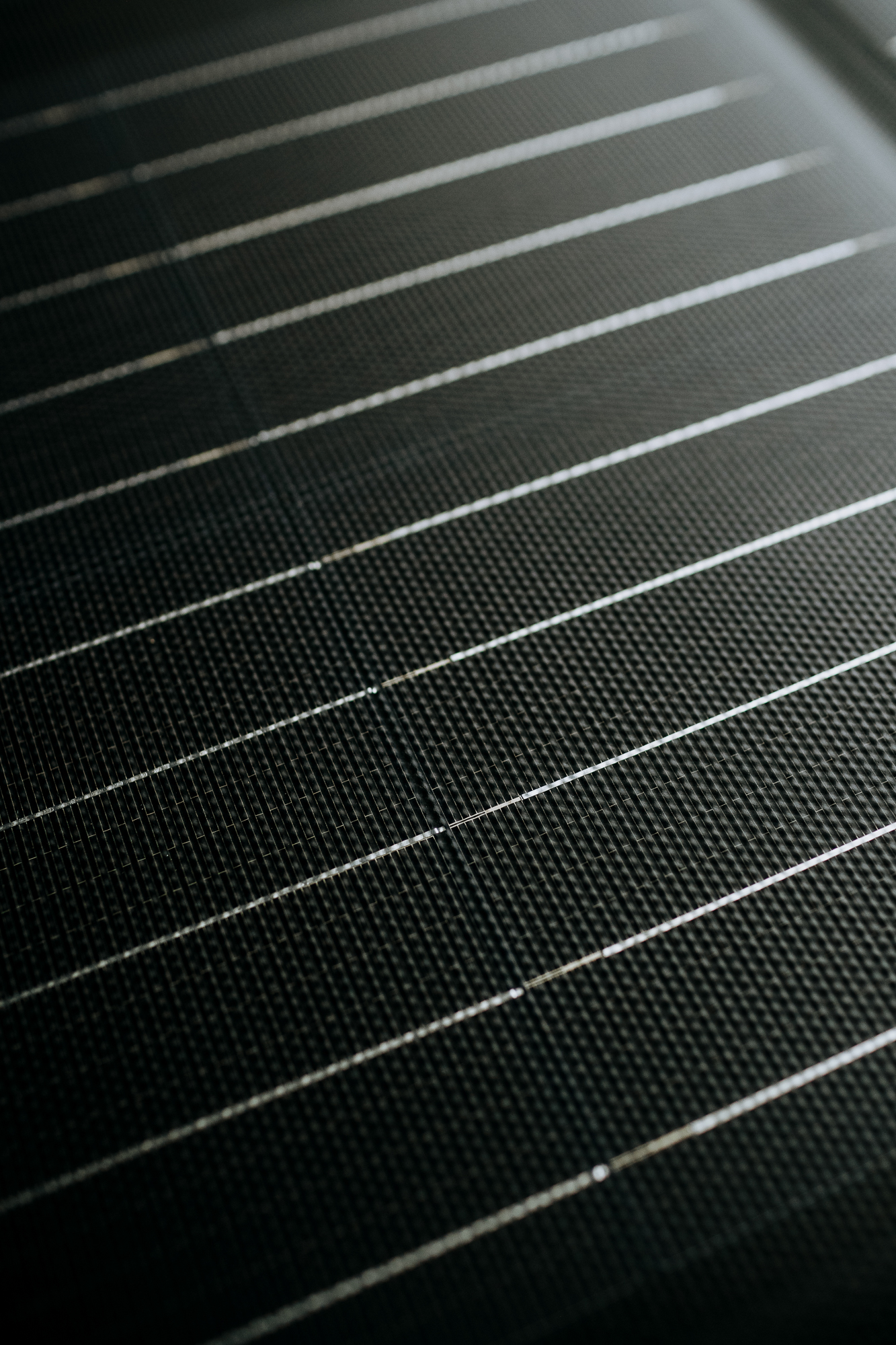
Redarc designed the 160-watt solar blanket to be durable and portable. The ETFE coating helps to resist UV rays and withstand high temperatures, and the non-stick properties keep it cleaner longer. Connection to your electrical system is made via the integrated Anderson SB50 connector and a wide variety of adapters or cable extensions available from Redarc.
This little 160-watt solar blanket is a powerhouse. It packs down to a dense 14.4 x 14.4 x 2.8-inch, 10.5-pound package, but when unfolded is a 64.4 x 29.1-inch panel. Even though this portable panel isn’t light, it did well in the amps-per-pound test. When comparing output to the rated watts of the panel, it performed the best throughout the day overall. It’s worth noting that the ISC of this panel is 9.5 amps, but the recorded values peaked at 10.55 amps.
The Redarc solar blanket was only one of two panels that could generate power when half-shaded.
In general, this 160-watt solar blanket performed better than most in the test, but it is also the most expensive. If you’re looking for something that is very efficient, packs down to a small size, provides great performance throughout the day (including during shaded moments), and you’re not afraid of the price tag, then this could be the perfect product for you.
Pros
- Highest amperage output of the test
- Folds down into a small package
- One of only two panels that continued to perform when half-shaded
Cons
- Most expensive panel in the test (even per rated watt)
- Light-duty storage/travel case
$1,099 | redarcelectronics.com
Conclusions
Initially, I expected this test to show obvious differences in solar panel efficiency. After handling, weighing, measuring, moving, and evaluating mounting methods, I realized it was more about finding the right panels for the intended application.
Rigid panels are known for their longevity, but most are fairly heavy. Lightweight, flexible panels can be very easy to install, but if they don’t have enough of an air gap between the mounting surface, overheating the panel (or the surface itself) can cause low efficiency or catastrophic damage. Portable models require setup every time you want to use them but allow you to park your vehicle in the shade while still collecting those precious amperes.
There are pros and cons with each of the panels tested, but hopefully, this evaluation will help you figure out which one is best suited to your vehicle and travel style.

Value Award
The Value Award was easy to see from the drop. The Samlex 100-Watt monocrystalline rigid panel and Overland Solar 130-watt semi-flexible panels are both priced below $400. Both performed well, but the Samlex presents the better value.
If you’re limited on payload and want to keep the overall height of your vehicle as low as possible, all while maintaining the solar performance, the $379 Overland Solar 130-watt semi-flexible panel is worth considering.
The Samlex is a tried and true rigid panel with a pedigree to give you confidence that it can withstand years of abuse. At $256, it was the least expensive panel in the test but one that inspired huge confidence based on its build quality. As mentioned, I have years of personal experience with this model, and I have yet to run into any issues.
Editor’s Choice Award
With each panel in the test performing well in optimal conditions, and multiple panel types tested, there were two contenders that stood out.
The Zamp Solar Obsidian Series rigid panels show ingenuity in the field. Designed and built in Bend, Oregon, they are more expensive than other rigid panels, but they are lighter and thinner, all while proving to perform well.
In the past, I wasn’t convinced that a portable panel could serve me well, but after using the Overland Solar Bugout 130, I’m starting to change my tune. It’s light, comes in an integrated carry case that has a confidence-inspiring carry handle, strong Velcro closure, a multitude of tie-down grommets, and is small enough to tuck in most vehicle crevices.
I’m currently planning an electrical system for a new composite flatbed pop-up camper, and I found myself specifying the Zamp Obsidian panels to be hard-mounted to the pop-up roof due to their expected durability, low profile, and lightweight design). The Bugout 130 would then be used to temporarily connect to the truck starting battery, allowing it to be topped up, charged if ever unintentionally discharged, or to charge the camper batteries via the Victron Orion-Tr Smart DC-to-DC truck battery to camper battery charger.
Overall efficiency was a factor when choosing these panels, but the ease of use, expected long-term reliability, form factor, and weight were major considerations.
A testament to the quality options available today, you’d be hard-pressed to find a bad solar panel in the bunch. Each panel’s efficiency was high, and the factory support from each of these manufacturers will most likely be stellar. Finding solar panels for your specific application is now easier than ever.
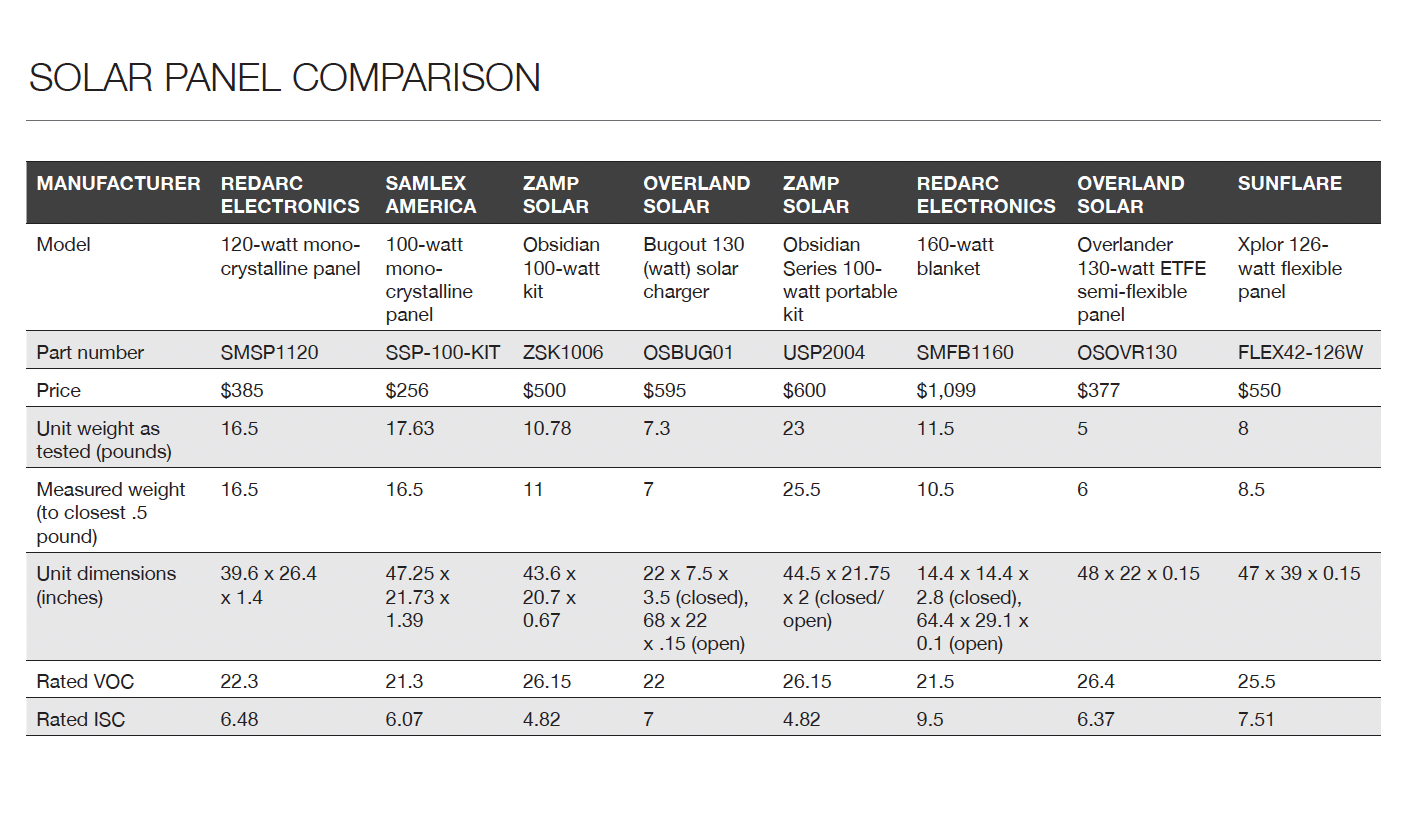
Our No Compromise Clause: We carefully screen all contributors to ensure they are independent and impartial. We never have and never will accept advertorial, and we do not allow advertising to influence our product or destination reviews.


